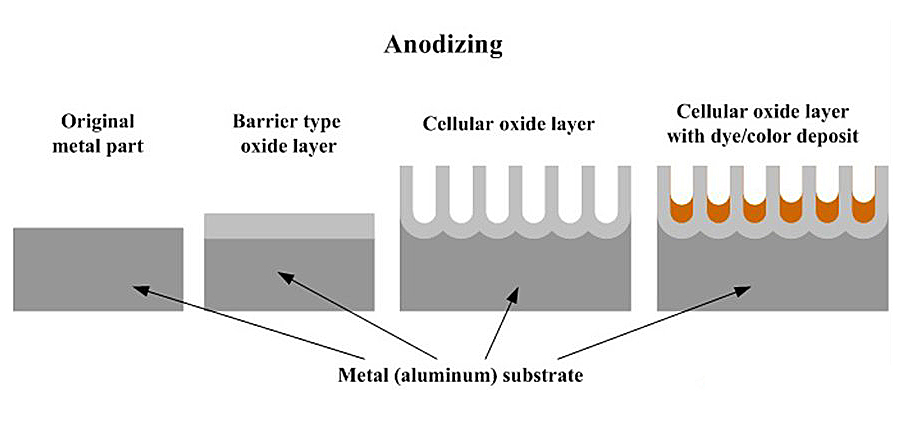Welcome to Zhongjda Industry
Toggle Navigation

Anodization method you must understand
The aluminum extrusion is anodized to delay corrosion, improve lubrication and achieve dyeing during electrochemical conversion of aluminum. According to the Aluminum Anodizing Committee (AAC), “the anode structure is derived from an aluminum substrate and consists entirely of alumina. This alumina is not applied to the surface as coating or electroplating, but is applied to the underlying aluminum. The oxidation process consists of four steps and therefore has a broad aesthetic appearance.
Step 1: Pretreatment
The first step in anodizing involves pre-treating aluminum by degreasing and pickling and providing a visible finish. Bright or satin treatment can be used to produce the desired effect. Satin processing involves light etching to form a uniform matte finish on the aluminum. Whitening involves cleaning any heavy metal residues of aluminum that have not been removed during the pretreatment process. Bright, satin-polished aluminum profiles provide a smooth, clean surface for anodizing.
Step 2: Anodizing
The anodizing process requires the material to be immersed in the acidic electrolyte while the current is passing through. AAC states: “Aluminum acts as an anode, releasing oxygen ions. It binds to the aluminum atoms on the surface.” This process is a form of controlled oxidation in which the metal chemical composition is changed to the desired level. . After anodizing aluminum, the color can be applied in a variety of ways.
Step 3: Color anodizing
There are several techniques for color anodizing aluminum. One technique is electrolytic coloration, which involves immersing the anodized aluminum in a bath of an inorganic metal salt. When the metal salt is oxidized in the pores of the aluminum, a current is applied to the plating solution. The color of the aluminum will vary depending on the chemical conditions of the bath and the length of the soaking time. Popular anodized finishes include gold, black, stainless steel, clear, brown, bronze and nickel. Some companies that use advanced technology also offer color matching and custom color anodizing.
Step 4: Seal
The final step in the anodizing process is to seal the aluminum to prevent corrosion and water leakage. Anodized aluminum extrusions can be sealed in three ways: cold, heat or a combination of the two. This also prevents scratching or soiling of the surface.
Benefit
According to the AAC report, there are many significant benefits to anodizing aluminum. This includes durability because anodized aluminum has a reactive finish embedded in the metal, and anodizing ensures color persistence and provides a visually appealing alternative to traditional aluminum. Anodized aluminum is a durable product with low process and maintenance costs. According to AAC, the most common uses of anodized aluminum are in household appliances, food preparation equipment, art, furniture and sporting goods. Anodized aluminum has also been used to make trusses and handrails for NASA space stations. Please contact us for more information.